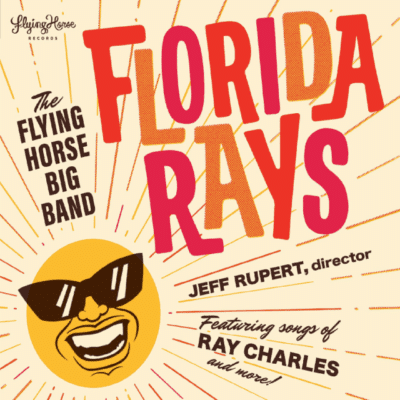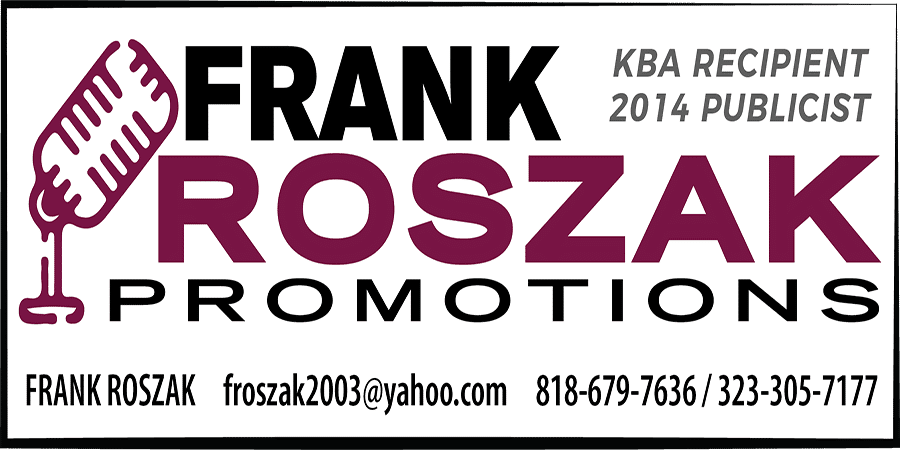The Flying Horse Big Band Florida Rays

The Flying Horse Big Band
Florida Rays – featuring songs of Ray Charles
Flying Horse
Orlando’s own Flying Horse Big Band, on their seventh release, pay] tribute to perhaps the city’s biggest musical icon, Ray Charles on this expansive outing directed by Jeff Rupert, a tenor saxophonist who doesn’t play on the album, but conducts the band, Rupert is also an educator, serving as Director of Jazz Studies at the University of Central Florida. Readers of these pages have seen his name before, as he fellow tenorist George Garzone this past January issued The Ripple, paying tribute to Lester Young. This is a totally different endeavor as Rupert leads an 18-piece big band with four different vocalists for a wide array of Ray Charles tunes, save the irresistible “Watermelon Man.”
You may well associate Ray Charles with Seattle or Georgia but here’s the real deal. Charles spent his formative years, raised in Greenville, Florida. After his mother’s death in 1945, Ray moved to Orlando at age 16 and struggled to support himself by performing in the wide array of local venues that were available at the time. Rupert’s liner notes shed more light. Some think that Charles’ switch to country and western was odd after the he had has so much success in blues and jazz but Rupert points to Charles’ early career in Orlando and Tampa, performing (an yodeling) with groups such as the Florida Playboys. Charles almost got his first big break in Orlando, auditioning for bandleader Lucky Millinder, who dismissed Charles as having little talent. (yes, you read that correctly). Charles left Florida, moving to Seattle, getting as far away as he could while remaining in the states. There he met the young trumpeter Quincy Jones, and the rest…well, you know the story.
Charles, of course, was arguably first major genre hopper of note. As such, The Flying Horse Big Band covers the wide swath of blues, R&B, jazz, country, and pop. His biggest hits such as “Hallelujah I Lover Her So,” “I’m Moving On,” “What’d I Say,” “Hit the Road, Jack,” “Busted,” and “Unchain My Heart” along with seven others appear in this set. Of course, the big band setting is appropriate for Charles who often played with large ensembles and his famous Raelettes. Rupert doesn’t try to replicate (smart move) that latter part of Charles’ show but instead turns to four different vocalists, each of whom share lead vocals, and in two cases pair up.
Rob Paparozzi gets the most vocal work, singing on six of the eleven vocally rendered tunes (two are instrumental). Paparozzi also plays harmonica and his litany stretches to the Original Blues Brothers Band and Blood, Sweat and Tears, among others. Fellow New Jersey resident Vance Villastrigo takes the lead on three, pairing with Paparozzi on “It Should’ve Been Me.” To this writer, the most striking performances come from Florida native and Orlando resident DaVonda Simmons who leads incredibly soulful takes on “Lonely Avenue” and “What’d I Say” as well as duetting with Paparozzi on “Hit the Road, Jack.” Simmons is a mainstay in the Orlando music scene and another Orlando resident, Kristian Dentley, is the fourth vocalist, performing only on “(It’s Not Easy) Bein’ Green.” He is best known for his work with the vocal group, Take Six.
Ray Charles music – big, bright, brassy, and irresistible.
- Jim Hynes
Discover more from Making A Scene!
Subscribe to get the latest posts sent to your email.














































